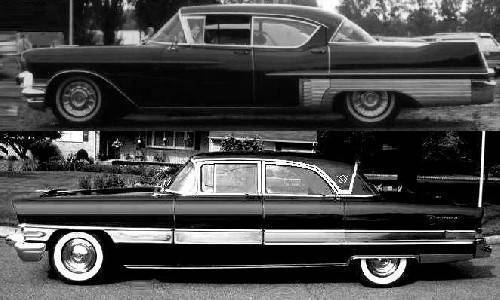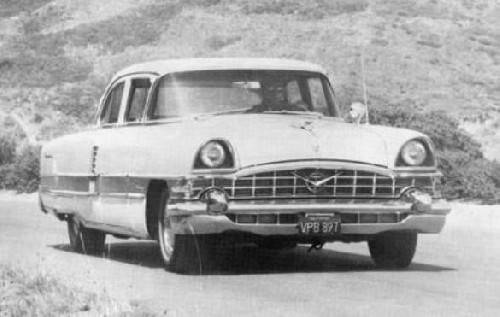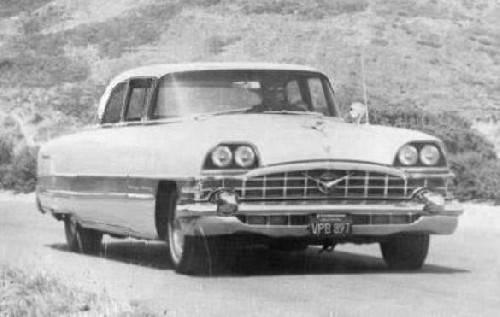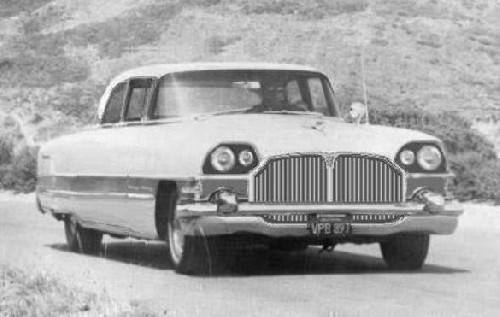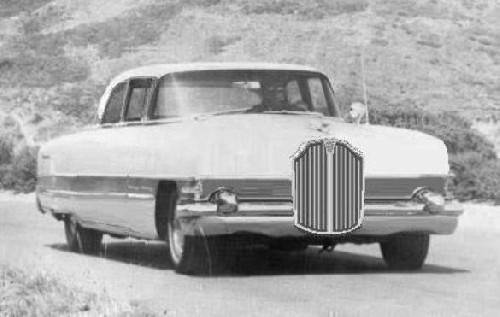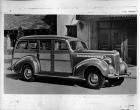|
Re: Packard & Hudson proximity
|
||||
|---|---|---|---|---|
|
Home away from home
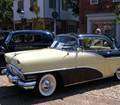
|
Here is my alternative history:
It is 1921. Packard President and General Manager James Alvan Macauley reviews a business analysis white paper regarding the corporate structure of General Motors. Intrigued, Macauley invites Roy D. Chapin, Sr., chairman of Hudson Motor Car Company, to play golf and over lunch in the clubhouse, discusses what he had read and asks Chapin's thoughts about possibly merging with Packard. Hudson is in solid financial condition and had recently acquired Essex. Chapin is non-committal but promises to think about it. In the meantime, Macauley meets with Walter P. Chrysler, who has recently resigned as president of Buick and vice president of GM production. Chrysler is trying to buy debt-ridden Willys-Overland and is making overtures to Maxwell. Macauley tells Chrysler that Packard is in a position to assist Chrysler with acquiring both companies and setting up his own umbrella corporation, Chrysler Motors, if he would consider a merger with Packard. In a few days, Chrysler contacts Macauley and agrees, and soon articles of incorporation are drafted. In the meantime, Chapin has met with his board of directors and has concluded that a merger with Chrysler-Packard would indeed be in all parties' interest. Chapin meets with Macauley and Chrysler and floats his own idea: why not fill in the base car market with, say, Nash? Chrysler had worked with Charles Nash at GM and admired and respected Nash for his ability to organize and his knowledge of the industry. Macauley thinks Nash would be a great addition and the three men decide to approach Nash with the offer to serve as CEO of a conglomerate corporation. When the four men meet in Macauley offices at Packard, Nash agrees to the arrangement and suggests a new name - the American Motors Corporation. During the next 16 years American Motors (or AM) expands to include Dodge Brothers, DeSoto, and Graham. Packard acquires Marmon in 1928 and Plymouth joins in 1934, which locks in the corporate structure for the next 20 years. During this time, AM moves to the No. 2 position behind GM and well ahead of struggling Ford. Packard becomes the undisputed luxury car manufacturer and astonishes the world in 1941 by bringing out an all-new model called Clipper, which features a high-output V-8 engine, a torsion bar suspension, factory air-conditioning, and automatic transmission - all offered as standard equipment. At this point, Packard is selling nearly three times as many units as Cadillac. By 1957, Packard is the No. 1 luxury carmaker in the world and in 1966, AMC supplants GM as the No. 1 car manufacturer worldwide.
Posted on: 2013/2/14 10:16
|
|||
|
You can make a lot of really neat things from the parts left over after you rebuild your engine ...
|
||||
|
||||
|
Re: Packard & Hudson proximity
|
||||
|---|---|---|---|---|
|
Home away from home

|
Just noticed your posts MrB, will read and enjoy as soon as I hit submit.
55PGuy wrote: The only way I can see that Packard could have, in good faith, assured dealers (and investors) of an adequate volume of '57 cars was if they produced a re-worked '55-'56 model. Packard did not have the money or the time for the tooling and modification of the assembly line that would obviously have been needed to move to production of a "Black Bess" based car. Agree completely. Lead times for complete redesigns take 3-4 years. Nance was at risk of another '55 debacle. Also agree the '51/'55 shell might have had a couple years left. One can't say for sure... as PA Patrician astutely wrote: "History, unfortunately, never reveals its alternatives." At the risk of corrupting our fine discussion, here's a few visuals of what was possible if front axle were extended 7 inches and rear axle 5 inches. Rear door moves forward to displace body insert. All door outers are retooled to give Predictor's straight through sides. Front theme was the big challenge and opportunity. Predictor was one alternative. If investors' loans weren't sufficient, perhaps integrating quads into the '56 grill might have sufficed, even if illegal in 17 states (have included before/after images so you can toggle to see the changes). 400+ CID V8 underhood. Alongside this new flagship the mid-'56 Executive could have been retained for extra sales. In sedan form it could have adopted the '56 Patrician's longer body to entice more buyers. Together these two lines might have done fairly nicely for Packard and bought needed time to improve and tighten up the '57 Program as a more measured '59 Program. Wanted to show what was possible with Studebaker but having upload issues on my end; working on a fix.
Posted on: 2013/2/14 11:24
|
|||
|
||||
|
Re: Packard & Hudson proximity
|
||||
|---|---|---|---|---|
|
Home away from home

|
I like your scenario MrB. THAT is the kind of imagination that was needed throughout this whole period!
Posted on: 2013/2/14 12:30
|
|||
|
||||
|
Re: Packard & Hudson proximity
|
||||
|---|---|---|---|---|
|
Forum Ambassador

|
I like the 57 stopgap restyle, in profile. Seems to be just what would have been necessary to accomodate 4-door hardtop.
However, quad headlamps might have posed a problem - not legal in all 50 states that year, IIRC. Perhaps a small driving lamp for the inboard location, instead, while retaining the traditional, large dual-filament sealbeam - along the lines of what Chrysler had to do for some of its quad-styled front-end treatments that year. (Doubtful if Packard could have afforded to run both styles, though.)
Posted on: 2013/2/14 16:05
|
|||
|
||||
|
Re: Packard & Hudson proximity
|
||||
|---|---|---|---|---|
|
Home away from home

|
Great idea. Would have cost little to offer both the 7 inch single and 5-3/4 quads. Took a stab at an alternative that works in the bigger light plus driving light (took a guess at size... 60% of single light). Also took the opportunity to present a different grill, something more uplifted than the '56 that combines both classic and modern elements. Probably a bit oversized but it allowed me to use the headlight area to create the notch in the ox yoke. Not sure if the circle/V belongs. Image doesn't show any drama in the grill's depth or an inside chrome bezel surround but they would be there. Side reynolds wrap would wrap around to front.
Always liked the Firearrow III and IV and '57 300C's clearly defined grills. UPDATED 9/15: Replaced with split grill theme. UPDATED 9/15: Added vertical grill with Predictor hidden headlight theme. Elegant yet mysterious. Packard would have needed to do a customer clinic to see how it checked out.
Posted on: 2013/2/14 19:58
|
|||
|
||||
|
Re: Packard & Hudson proximity
|
||||
|---|---|---|---|---|
|
Home away from home
|
Not attractive, but understand what you are trying to accomplish.
(o{}o)
Posted on: 2013/2/14 22:51
|
|||
|
We move toward
And make happen What occupies our mind... (W. Scherer) |
||||
|
||||
|
Re: Packard & Hudson proximity
|
||||
|---|---|---|---|---|
|
Home away from home

|
Mahoning,
The vertical finned grill is much more classic Packard style than the egg crate, but in the rendering it's a little too tall. The first pic with quad headlights and egg crate grill is really sweet looking--like the earlier one you did with the dark blue Clipper pic. I have a saved copy of that rendering (it's even on my screen saver pics) with quad headlights and re-worked, slimmer grill and bumper. I still think it's a striking car, and one that no one would guess wasn't a factory model unless they knew Packards. I'll post it again if you don't have it handy. The nice thing about some of these renderings is that they are doable by a good modification shop, and could become realities made from salvaged cars. The over-under shots of the Cadillac versus the Packard shows which is the more forward-looking design. When Lincoln re-did the Continental, in '61 I believe, they showed it on a TV ad in comparison with the Cadillac, and it's amazing how tired and "late-fifties" the Cadillac design looked. There's a U-Tube of the commercial somewhere out there.
Posted on: 2013/2/14 22:52
|
|||
|
Guy
[b]Not an Expert[/ |
||||
|
||||
|
Re: Packard & Hudson proximity
|
||||
|---|---|---|---|---|
|
Home away from home

|
Go right ahead and repost, PGuy.
I replaced the previous vertical grill image with an update that works in the split grill theme and other Packard elements. Curious how this one looks to fresh eyes. UPDATED 9/15: Added new theme with hidden headlights.
Posted on: 2013/2/15 9:47
|
|||
|
||||
|
Re: Packard & Hudson proximity
|
||||
|---|---|---|---|---|
|
Home away from home

|
As discussed, ideas for the '57 Studebakers. Where Packard would stay tall, Studebaker would go low. I started with the Hawk then, while keeping all else fixed, moved the rear wheels forward 4 inches to get rid of the rear axle kick-out that imho always plagued those cars. 4d hardtop sits on Hawk's 120.5 inch wheelbase, decklid is same as Hawk and rear overhang, overall length and rear legroom are now 4 inches longer. Convertible and coupe (not shown) sit on shorter 116.5 inch Champion wheelbase; decklid, length and rear legroom are same as Hawk. A wrap around windshield fashioned like the taller Studebakers would have improved appearance even further. If anyone has ever seen a Silver Hawk's interior you know how nice a Studebaker could be trimmed. The quality issues that folks here have called out are, well, not good. South Bend would have needed to fix what it could for '57.
With these cars and the new Packard, Studebaker-Packard may have had a shot at getting the investors to bite. The big question would have then become 1959-60. It would have been one thing to reskin cars that were largely amortized, quite another to do new designs from the ground up. The '58 recession would have complicated even further although the luxury market took less of a hit than the medium priced market.
Posted on: 2013/2/15 17:55
|
|||
|
||||

 (42.45 KB)
(42.45 KB)